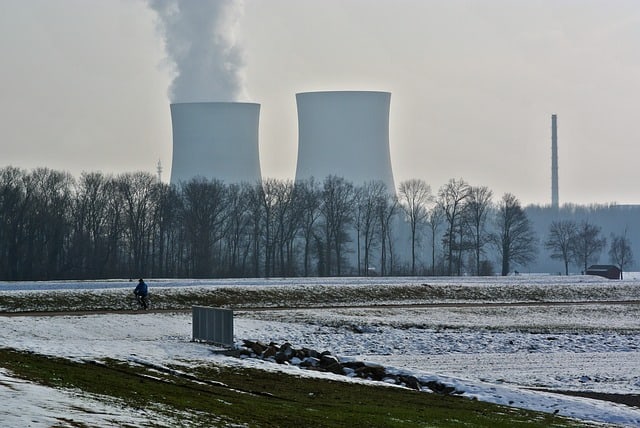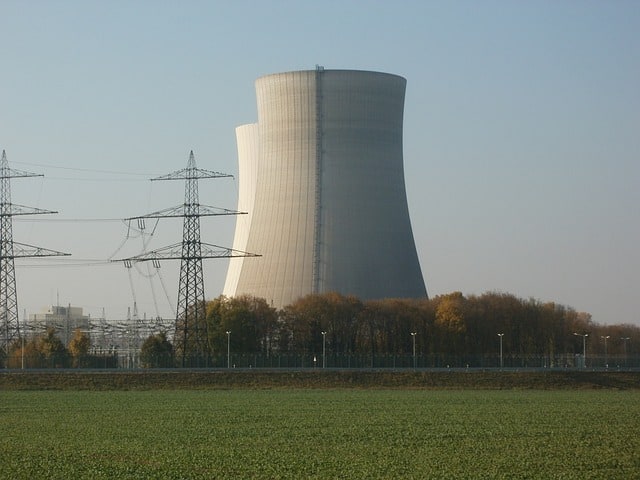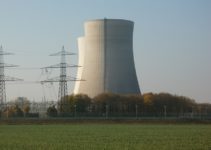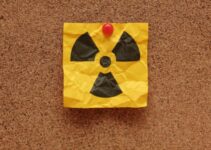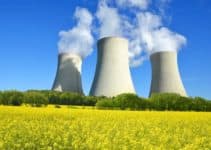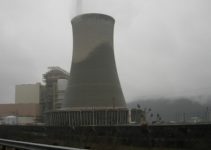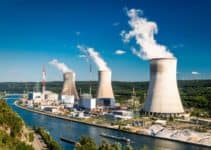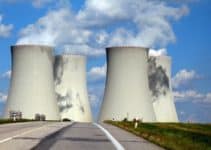Radioactive pollution occurs when radioactive materials are deposited in the atmosphere or environment, especially when their presence is accidental and presents an environmental threat due to radioactive decay.
The destruction caused by the radioactive materials is from the emission of hazardous ionizing radiation (radioactive decay) like beta or alpha particles, gamma rays, or neurons into the environment.
Since the substances are characterized by radiation – because there is a lot of instability of the particles present in the radioactive materials – they can seriously affect, alter and even destroy plant, animal, and human life.
The extent of damage or danger posed to the environment depends on the radioactive material concentration, the energy emitted by the radiation, the proximity of the radioactive materials to those exposed, and the radiation type. Herein is a detailed explanation of the causes, effects, and solutions of radioactive pollution.
Causes of Radioactive Pollution
1. Nuclear Accidents From Nuclear Energy Generation Plants
In the postmodern world, various forms of energy are being discovered. Among them is nuclear energy, which is touted to be the most potent energy source due to its high latent power, and that’s because of its high level of radiation.
Its use is, therefore, prohibited, but research is underway to determine its environmental safety and to put in place the most appropriate precautionary measures for its use.
In some cases and countries, however, nuclear power plant accidents like the Fukushima Daiichi nuclear disaster (2011), Chernobyl disaster (1986), and Three Mile Island accident (1979) left many dead and even many more affected by the radiation released.
2. The Use of Nuclear Weapons as Weapons of Mass Destruction (WMD)
The use of nuclear missiles and atomic bombs, a form of nuclear energy, in the Second World War explains not only the cause but also the damaging nature of radioactive pollution or contamination.
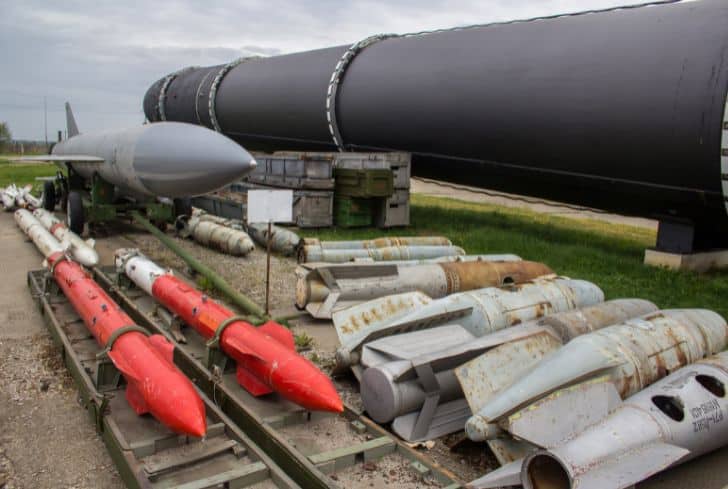
The effects of the two strikes in Hiroshima and Nagasaki that prompted the end of the war in 1945 are still seen and felt today. Children are still born with complications like mental retardation and conditions like autism and other disorders, and the cancer cases in the two towns are more than in the rest of Japan.
3. Use of Radioisotopes
Radioisotopes offer various applications in the industrial sector, particularly in detection technologies. Certain isotopes, such as uranium, possess high levels of radiation, while radioactive materials containing carbon can conveniently and inadvertently contaminate waterways through sewage lines.
Untreated sewage is often released into water sources, where radioactive isotopes combine with other compounds and elements. This contaminated water is then used for household purposes and consumed by aquatic life, including fish, eventually leading to radiation exposure.
4. Mining
Mining is primarily the act of digging up mineral ores to be broken down into manageable pieces. Naturally occurring elements such as Radium and Uranium contain radioactivity and are among these minerals.
Through mining, these materials are brought to the surface, effectively augmenting natural geological processes. Other minerals that carry radiation include thorium, plutonium, radon, potassium, carbon, and phosphorus.
5. Spillage of Radioactive Chemicals
There have been instances of spillages over oceans when ships hit glaciers or coral reefs. These accidents end up releasing chemicals into waterways and the atmosphere.
Unfortunately, what most people may not know is that the majority of these chemicals, including petroleum products, have a significant level of radiation, which means they’re detrimental to the environment.
6. Tests on Radiation
Radiation is one of the critical elements in the cure and treatment of cancer. Its potential is harnessed through chemotherapy to impede the growth of malignant cells while bolstering the immune system.
But despite all the benefits, we’ve had cases of scientists experiencing complications and even fatalities due to exposure, especially when conducting a study on radiation.
7. Cosmic Rays and Other Natural Sources
These come from outer space to our planet with intense radiation as their nature, therefore, causing radioactive pollution.
Gamma rays, for example, are said to have the highest radiation level, yet, depending on their intensity, some are not visible to the human eye, making it hard to avoid them.
The quantity with which the rays hit the earth depends on the altitude of the earth and the geographical location.
Other sources of these radiations include radioactive elements in the earth’s crust. Perfect examples include potassium 40, radium 224, radon 222, thorium 232, uranium 235, uranium 238, and carbon 14, and occur in rocks, soil, and water.
There can also be unstable radio-nuclides split into smaller parts emitting energetic radiation that can penetrate the body of organisms through the air during respiration.
8. Nuclear Waste Handling and Disposal
The radioactive wastes are of three categories:
- High level
- Low level
- Transuranic
These wastes mainly come from the disposal of nuclear weapons, the cleaning materials from nuclear plants, military installations, emissions from plutonium processing, and other radioisotopes from hospitals and laboratories.
Usually, the handling and disposal of nuclear waste generate low to medium radiation over a long period of time. Their effects are hard to predict, and the waste may not be easy to target and eliminate simply because the radioactivity contaminates and propagates through air, water, and soil.
Plus, unlike most types of waste, radiation waste cannot be degraded or treated chemically or biologically. The only options are either to contain the waste stored in tightly closed containers shielded with radiation-protective materials (such as Pb) or dilute it.
The other way that radioactive waste can be contained is by storage in remote areas with little or no life, like remote caves or abandoned salt mines.
But then, it’s also important to note that no matter where you contain this waste, the shields can get damaged over time, whether using natural or artificial shields.
9. Defensive Weapon Production
Lastly, radioactive pollution may emanate from the production of defensive weapons. These weapons feature radioactive elements and may cause serious health problems to anyone exposed. However, the current standards prohibit the use of weapons with a significant amount of radiation.
Effects of Radioactive Pollution
1. Genetic Mutations
Radiation has adverse effects when it comes to genetics. It damages DNA strands leading to genetic breakup over time. The degree of genetic mutation depends on the level and type of radiation exposure.
Where the radiations are present in the atmosphere, the food and water in that environment are likely also contaminated, as are humans and animals. Once in the body, it remains active because energy cannot be destroyed.
The resulting mutation makes one highly susceptible to cancer. For pregnant women, kids born have adverse defects caused by genetic mutations like low weight during birth. Disfigured births, infertility, and blindness are other reported effects of radiation.

2. Diseases
You might not be aware, but cancer is the most dominant radiation-related disease. It has developed over the years and poses a significant risk to global health.
But it isn’t the only disease caused by exposure to radioactive elements. Others include leukemia, anemia, cardiovascular complications, and hemorrhage.
Of course, that’s without ignoring the fact that these radiations cause premature aging, resulting in premature deaths and high chances of age-related illnesses.
3. Soil Infertility
When the atmosphere gets contaminated with radiation, so does the soil. Unfortunately, once the radioactive substances find their way into the soil, they destroy the nutrients in it, rendering the soil infertile and highly toxic.
Usually, the harvest coming from contaminated soil still contains traces of the radioactive soil contaminants, making it unfit for consumption by both humans and animals.
But that’s not all – plants that grow from such soil are also genetically modified. Plants are at the base of the food chain, and that means the radioactive elements are passed to the herbivores consuming the plants, then carnivores eating the herbivores, and so on and so forth, leading to what we call biomagnification.
4. Cell Destruction
Radioactive pollution has diverse effects, such as the alteration of cells. The body of living organisms comprises billions of cells, with each having its own purpose to fulfill.
Radiation distorts the cells present, leading to permanent damage to the various organs and organ systems. In the face of too much radiation, permanent illnesses and even death become imminent.
5. Burns
While radiation is not easy to feel, it’s easy to realize that it has affected you. Immediate presence of burns, red lesions, or sores are all signs of possible exposure. Where that’s the case, these signs eventually graduate to skin cancer.
6. Effects on Wildlife
The animals at different levels suffer differently. The bigger organisms get more affected than insects and flies, and that’s because they offer more room for the radioactive elements.
For instance, herbivores, such as cattle, when grazing on contaminated land, the Ce-13 and I-131 accumulate on the animal tissues in large amounts than they would on insects and other smaller organisms.
These radionuclides enter their metabolic cycles and affect their DNAs (mentioned above; ionizing). This results in a mutated animal generation with a higher risk of health issues by just a small amount of radionuclides.
7. Effects on Plants
The plants are also exposed to radiation, and the damage is mainly done due to the increased Ultraviolet waves. Different plants get affected differently.
But usually, exposure to radiation inhibits stomata from regulating gas exchange and controlling water loss through the pores.
When the radiation hits the chromosomes, reproduction gets targeted and is hampered, resulting in altered shapes, sizes, and health issues in plants. Where the exposure happens in high amounts, it destroys the affected plants.
8. Effects on Marine life
The power plants, the sources of nuclear energy and chemical processing, have been releasing radioisotopes into the water for decades. Cesium, Radon, Crypton, Ruthenium, Zinc, and Copper are a few of them.
And while the waste is released in a “permissible” amount, it does not mean it’s safe. In fact, radionuclides can be detected in the soft tissues or on the bones of the fishes and even in seaweed used in bread.
Solutions to Radioactive Pollution
1. Proper Method of Disposing of Radioactive Waste
Radioactive waste still has some level of radiation and shouldn’t be disposed of in the same way as regular waste. It shouldn’t be incinerated or buried. Instead, it should be stored in heavy and thick concrete containers to avoid any chances of seepage.
But again, as we said earlier, there’s no permanent way to keep radioactive elements perfectly contained. As such, the best thing is to dilute the radiation. And whether containing or diluting it, professional assistance should always be sought.
2. Proper Labeling
It is also necessary to label any material with radioactive content and provide the necessary precautions on the label’s content. This is because radiation can enter the body by a mere touch of radioactive material. Containers with such elements should be well labeled to make one use protective gear when handling them.
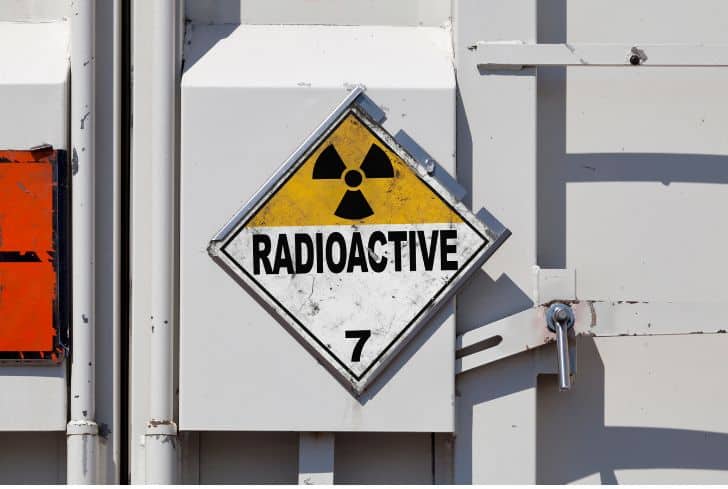
3. Banning of Nuclear Tests
It has already been proven that nuclear power has a lot of latent power that is very destructive.
And while the tests performed on them are usually not ill-intended, some of the radioactive elements released during these tests escape from one ecosystem to another, eventually affecting the organisms in that ecosystem.
For that reason, it’s essential to have these tests banned or at least have protective measures taken to contain the radioactive elements.
4. Alternative Energy Sources
The evolution and use of nuclear power was not a bad thing initially. However, considering the damage and threats it has on the environment, it is high time for its use to be discontinued and for the world to perhaps focus on alternative and environmentally friendly energy sources – like renewable sources of energy, namely solar, hydroelectric, and wind power.
The use of radioactivity to generate energy in nuclear power plants, for example, produces more radiation to the atmosphere considering the waste released from the various processes and combustion.
5. Proper Storage
Containers carrying radioactive material must be stored properly. For starters, such substances should be stored in radiation-proof containers to ensure no seeping or leakage during handling. Proper storage means no harm and can minimize cases of accidental leakage.
6. Reusing
Since it is not easy to store or dispose of waste, it can be recycled and used for other purposes, thereby protecting the environment.
7. Precautions at the Personal Level
There may be the possibility of contamination if one owns a house located near a nuclear power plant. In that case, it is recommended to check the level of radon gas in your building.
The radon level needs to be removed. Those who work with radioactive material are also at significant risk. They need protective measures to keep away from radioactive contamination.
